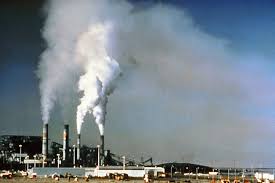
The World Health Organisation (WHO) in the first update of its air quality guidelines since 2005, has tightened global air pollution standards in recognition of emerging science that the impact of air pollution on health is much more serious than earlier envisaged.
- The upper limit of annual PM2.5 as per the 2005 standards, which is what countries now follow, is 10 microgram per cubic metre. That has now been revised to five microgram per cubic metre. The 24-hour ceiling used to be 25 microgram but has now dropped to 15. The upper limit of PM10, or particulate matter of size exceeding 10 microgram, is 20 microgram and has now been revised to 15, whereas the 24-hour value has been revised from 50 to 45 microgram.
- WHO’s new guidelines recommend air quality levels for 6 pollutants, where evidence has advanced the most on health effects from exposure. When action is taken on these so-called classical pollutants – particulate matter (PM), ozone (O₃), nitrogen dioxide (NO₂) sulfur dioxide (SO₂) and carbon monoxide (CO), it also has an impact on other damaging pollutants.
- Both PM₂.₅ and PM₁₀ are capable of penetrating deep into the lungs but PM₂.₅ can even enter the bloodstream, primarily resulting in cardiovascular and respiratory impacts, and also affecting other organs. PM is primarily generated by fuel combustion in different sectors, including transport, energy, households, industry, and from agriculture.
JOIN GS TIMES IAS PRELIMS CURRENT AFFAIRS DAILY ONLINE TEST SERIES: HINDI AND ENGLISH
CLICK HERE DAILY CURRENT AFFAIRS QUIZ FOR STATE CIVIL SERVICES

